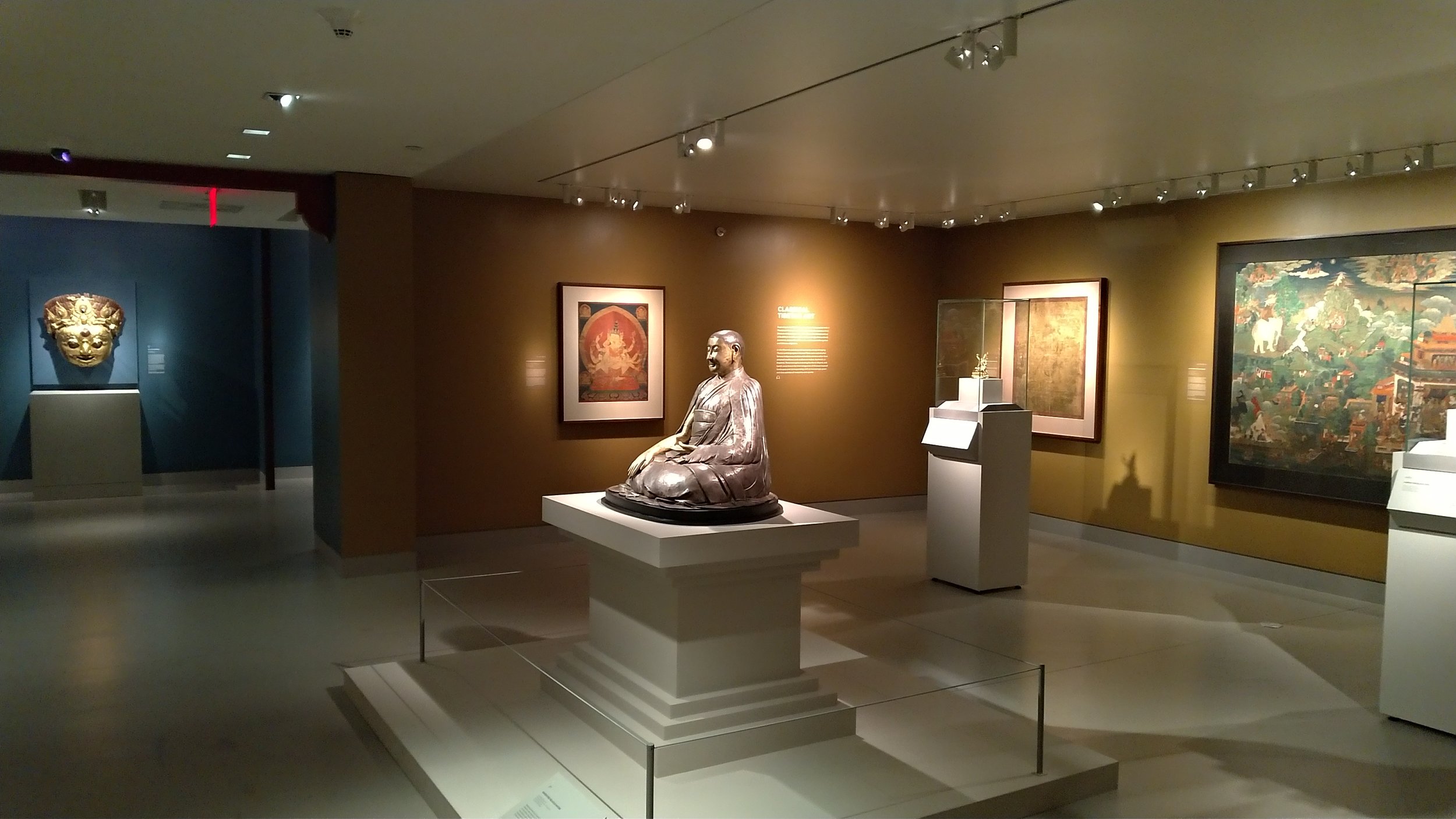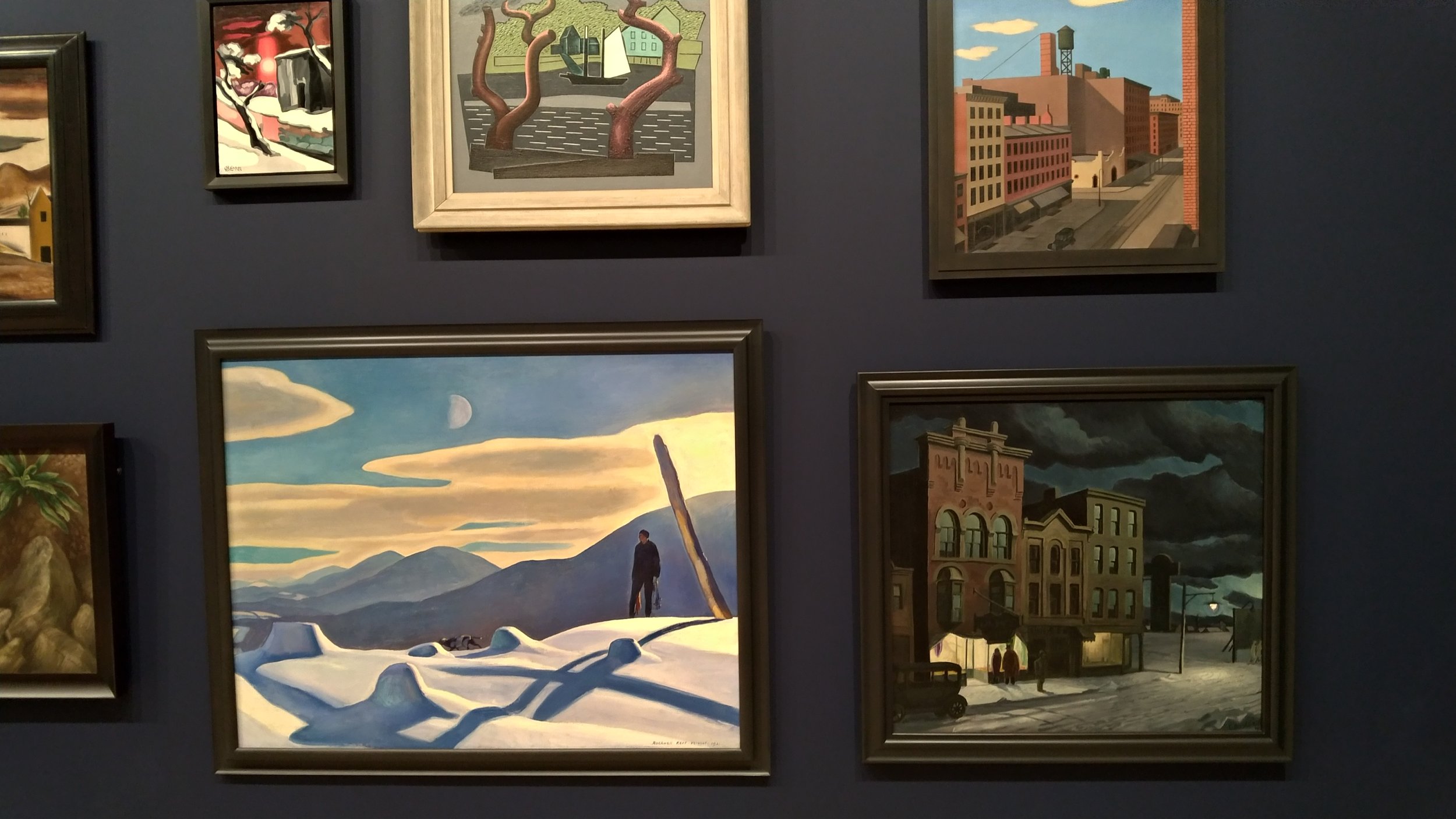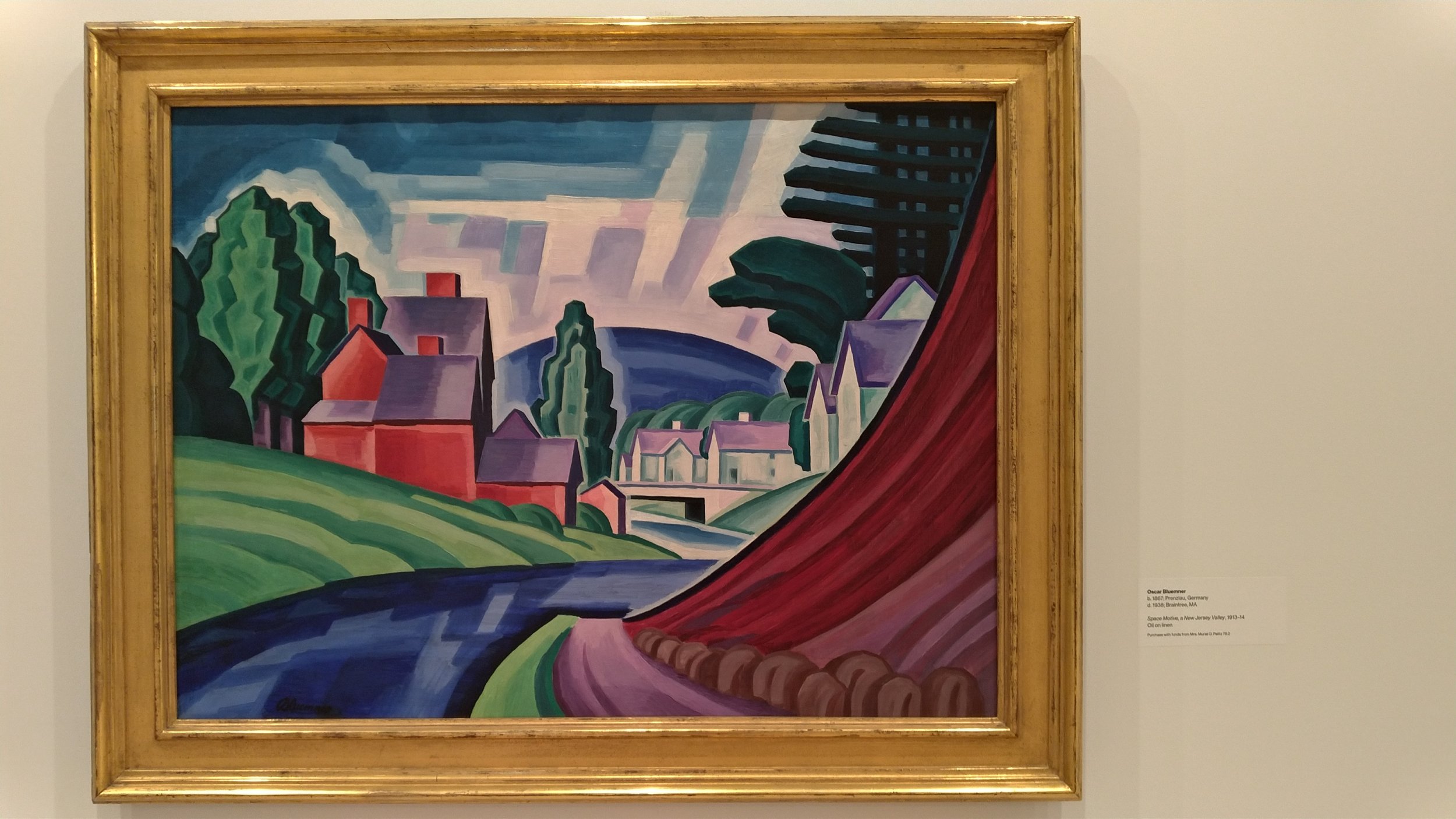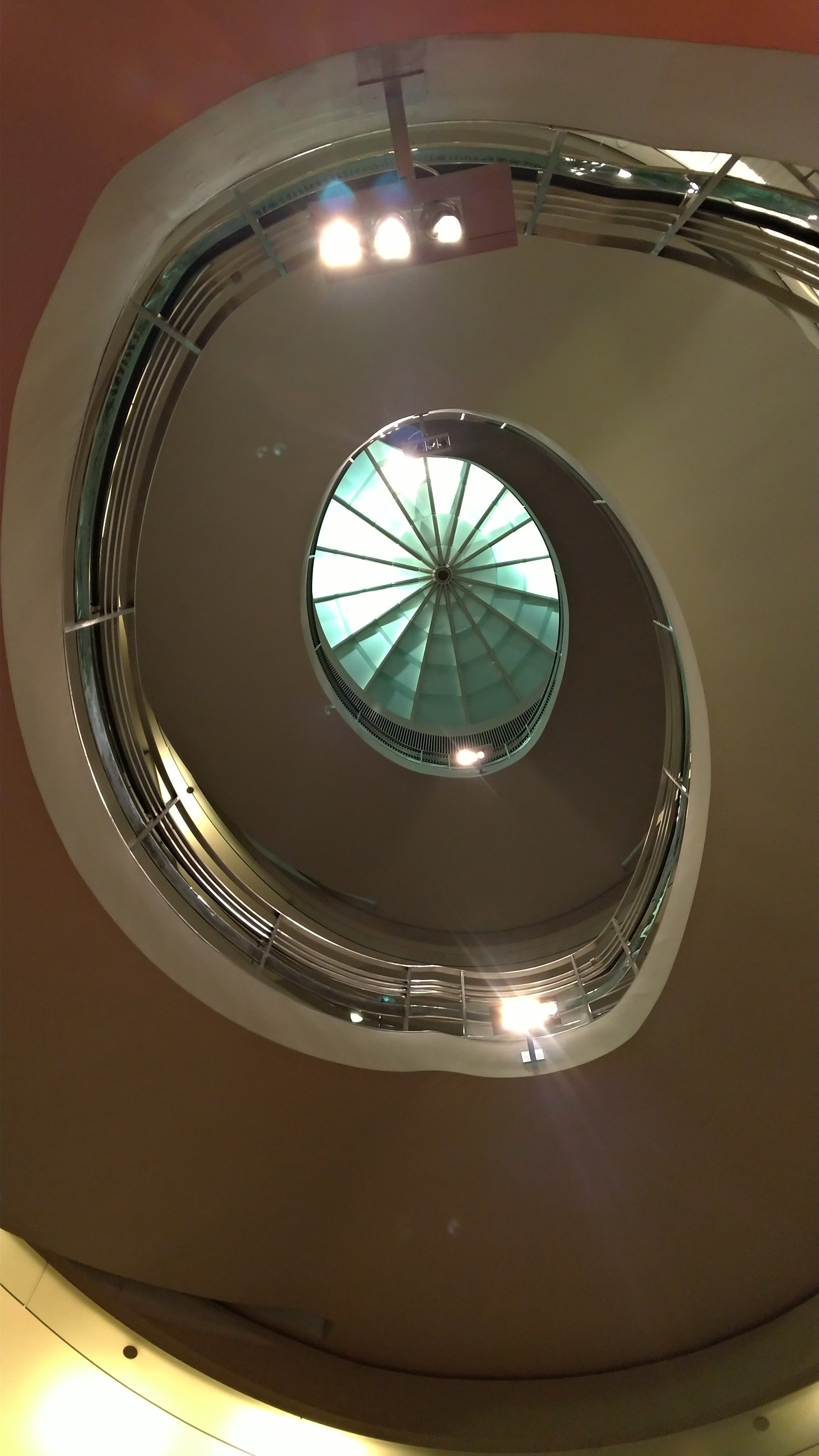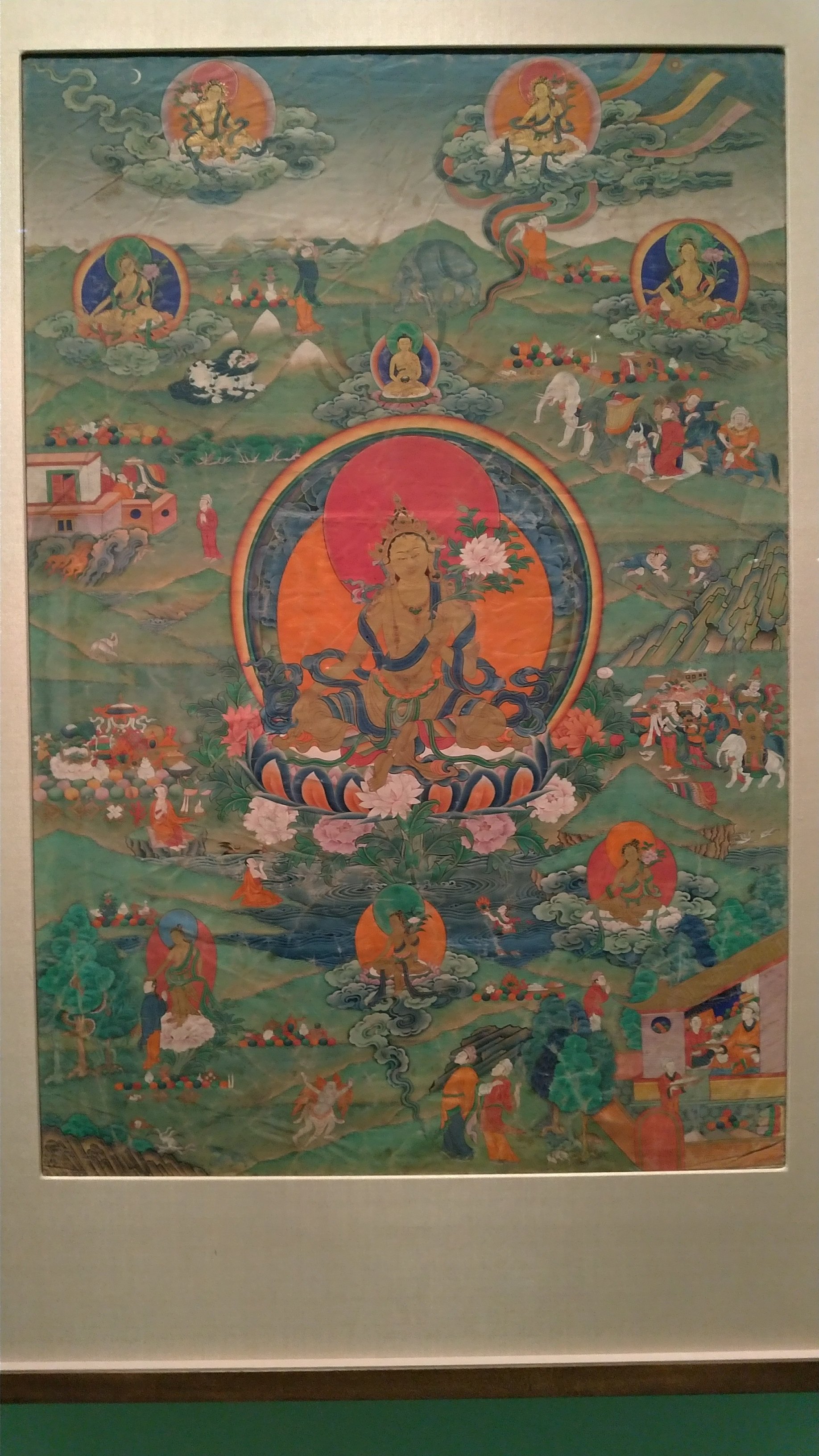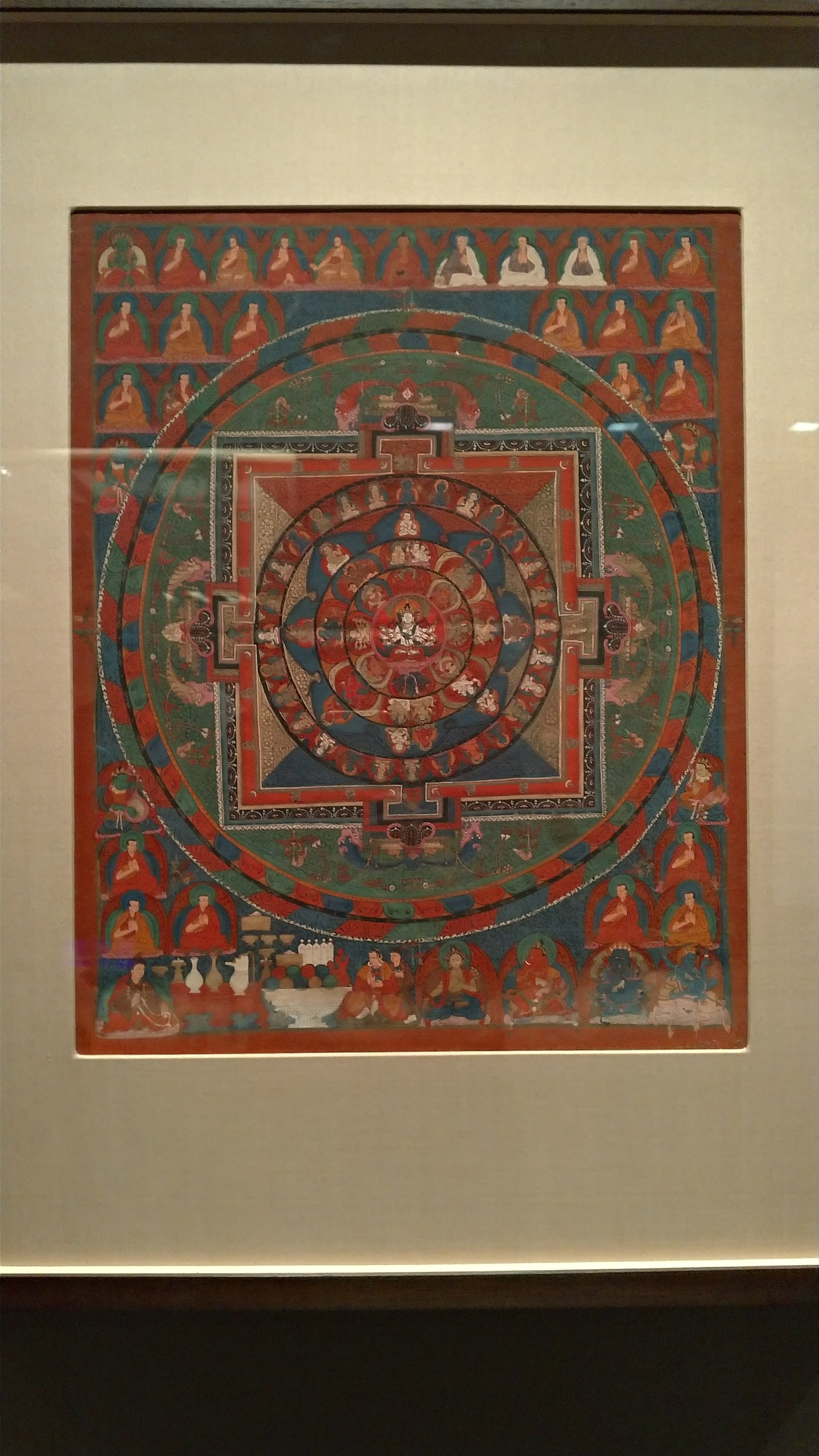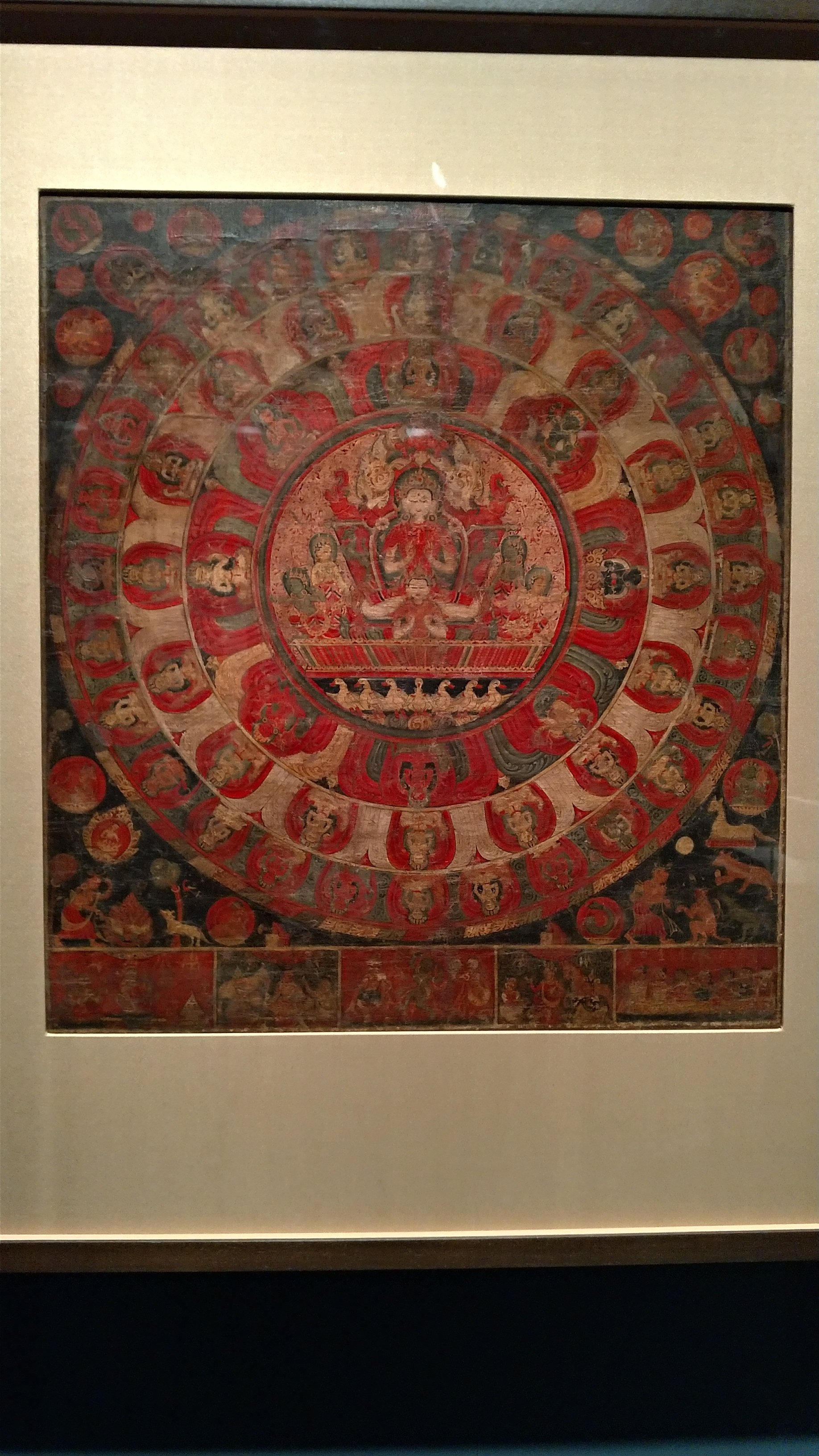Doubts or disease, desire and attachment, anger, greed, wrong views, ignorance, jealousy and envy, pride: here are the eight fears Tara can help you overcome. I'm standing in front of the 19th-century Tibetan painting, studying the details: the Buddhist deity is seated in the pose of “royal ease”, with her right palm extended above the knee in a gesture signifying supreme generosity, while in her left hand, placed at the heart, she's holding a pink lotus blossom. Her blue, green, orange and red flowing garments intertwine with blossoms and decorative motifs on the impressive lotus throne, while an orange and a red disc (nimbus and aureola, respectively) are encircling her.
The fears Tara can protect you against are depicted in specific forms (e.g. envy as snakes, anger as fire, and attachment as drowning), in scenes developed circularly around the powerful deity with the serene, trusting face. As I let myself identify with each and every one of the fears -the “external and internal threats that can cause physical and mental illness and prevent our spiritual progress”-, I simultaneously glance right and left at the other visitors: they seem to me equally absorbed by the artworks of the exhibition titled “Healing Practices”. I wonder if they, too, face similar fears. The reassurance (and relief) that “you're not alone” is activated, and you start viewing with new eyes your fellow travelers, not only on this journey to this specific museum, but also on the street, the subway, the whole city...
Perhaps thanks to the unexpected context (you're not lying on the shrink's couch) or the colorful, “exotic” medium (a Tibetan thangka, painting on cloth) or the space (a museum, i.e. a place where you go precisely to see and explore something outside yourself), well, perhaps thanks to the format of the journey, you are pleasantly surprised, and you dare face your fears in the eye.
The Rubin, the only NYC museum devoted entirely to Himalayan art, covers a broad geographical (India, Nepal, Bhutan, Mongolia), religious (Hinduism, Buddhism) and artistic-medium range (from embroidered silk rolls and sculptures to a buddhist shrine installation, with all its accompanying devotional objects, sounds, lighting and scent).
I first visited the museum in 2008, when I was directing a new play on Alexander Scriabin, written by Anna Forsythe. The ultimate vision of the avant-garde composer was a... multimedia work, intended to be performed in the Himalayas! (Yes, the Russian synesthete had already envisioned in the early 1900s a symphonic music concert not simply combined with color projections but also as a site-specific piece, since he believed that this holistic art event should exclusively take place in the “Roof of the World”.)
Wisely designed to encourage those ignorant in mantras, Tantras and stupas, the Rubin invites you like a big board game to “unlock” the primer of the geography, the cultures and the artistic outlets it encompasses. The exhibition “Gateway to Himalayan Art” is key. Thanks to the spiral unfolding of the building, you are able to go up and down via the central staircase from Himalayan 101 -where beginners are introduced to symbols, codes and, most importantly, heroes (Buddhas, Bodhisattvas, deities, human beings)- to select historical masterworks and contemporary projects alike, all inspired by the Himalayan sphere.
Descending through the spire to the ground level, I exit the capsule of the dizzying feast of colors and shapes, and of the videos of mandalas in three-dimensional animations. As soon as I set foot on the street, I am engulfed by the humidity of the metropolis, and its inevitable stink. I resort to Tara and try to suppress my rage against those who urinate on the sidewalks (and are therefore accountable for the foul smell), and to keep steady course towards ataraxia -and towards the magic of nocturnal Manhattan.
And then, images from last week's museum visit start to emerge in waves. Just seven days ago, I had been captivated at the Whitney (a few blocks down) by the utter beauty and loneliness of a snowy mountain landscape by Rockwell Kent, and by the unhoped for apotheosis of a New Jersey valley thanks to Oscar Bluemner's stunning colors and geometric viewpoint, as part of the exhibition titled “At the Dawn of a New Age: Early Twentieth-Century American Modernism”.
Are these two worlds in conversation? I wonder whether the, abounding in ceremonial bells and intricate motifs, Himalayan art (and worldview) comes to complement the bare doric landscapes of the Americans; whether Nepal and Mongolia come to unveil Vermont's and Alaska's snowy slopes, and to expose the hidden demons – mind's and soul's torments that the modernists strove to cleanse with their bold, rough strokes.
The answer is probably yes – the two worlds are in conversation, based on Kent's statement that he wanted to “paint the rhythm of eternity”, and on the fact that he titled “Nirvana” one of his paintings.
I hope to continue to seek composition. With Tara's help.
This essay first appeared in Greek in the TA NEA newspaper (in print) on November 8, 2022.
Το κείμενο αυτό πρωτοδημοσιεύτηκε στην εφημερίδα ΤΑ ΝΕΑ (έντυπη έκδοση) στις 8 Νοεμβρίου 2022.
